
Index
Overview
Applications & Benefits of GAO’s RFID, BLE, IoT & Drone for the Electrical Equipment Manufacturing
GAO Helps Customers Comply with Standards, Mandates & Regulations of the Electrical Equipment Manufacturing
GAO’s Software Provides API
Case Studies of RFID Applications
GAO Has Served the Electrical Equipment Manufacturing industry extensively
Overview
The electrical equipment manufacturing industry is crucial in producing components, generators, transformers, and other products essential for power supply and distribution, automation, transportation, and information technology. This sector’s significance is rooted in our dependence on electrical devices for everyday life. Moreover, with the current demand for sustainable and efficient solutions, this subindustry is experiencing steady growth. GAO´s RFID Inc., one of the top 10 global leaders in RFID, is based in the cities of New York and Toronto. The company has deployed numerous RFID, BLE, and IoT projects in the electrical equipment manufacturing industry.
Applications & Benefits of GAO’s RFID, BLE, IoT & Drone for the Electrical Equipment Manufacturing
Applications & benefits of applying RFID to Electrical Equipment Manufacturing
- Inventory Management: By implementing GAO’s RFID in inventory management, companies can automate their tracking process and reduce the risk of human error. This enables real-time visibility into inventory levels and faster identification of inventory shortages or excess stock. This improves inventory management efficiency, which can lead to reduced costs and increased profitability.
- Asset Tracking: I can be used to track assets within the electrical equipment manufacturing subindustry, providing real-time monitoring of asset location and status. This can improve asset utilization, minimize the risk of loss or theft, and enable predictive maintenance by identifying potential issues before they become more serious.
- Quality Control: GAO’s RFID can also be applied to quality control in electrical equipment manufacturing, allowing companies to track the movement of materials and components through the manufacturing process to ensure products meet required standards. GAO RFID enables real-time quality control by monitoring equipment performance and identifying potential issues before they affect product quality.
- Work-in-Process (WIP) Tracking: WIP tracking is another area where our RFID can be applied, enabling companies to track product movement throughout the manufacturing process. This helps identify bottlenecks and inefficiencies, improving productivity and reducing costs. RFID also enables real-time WIP tracking, allowing companies to monitor the status of each product and identify potential issues before they impact production schedules.
Applications & benefits of applying BLE technology to the electrical equipment manufacturing
- Equipment Maintenance: GAO´s BLE technology can enhance equipment maintenance in the electrical equipment manufacturing Subindustry. BLE sensors can monitor equipment performance in real-time, allowing companies to detect issues early and avoid serious problems. Predictive maintenance is also possible with BLE technology, as companies can analyze data to anticipate maintenance needs, reduce downtime, increase productivity, and extend equipment lifespan.
- Asset Tracking: It´s also useful for asset tracking in electrical equipment manufacturing subindustry. Our BLE beacons can be attached to assets to monitor their location in real-time, prevent loss or theft, and improve asset utilization. Companies can easily track inventory and allocate assets as needed, eliminating the need for manual tracking.
- Safety Monitoring: Can be used for safety monitoring in the electrical equipment manufacturing subindustry. Our BLE sensors can monitor environmental conditions and provide real-time alerts to employees or managers about potential safety hazards. This helps to prevent accidents or health problems and ensures a safer workplace. Employees can be quickly notified of any potential issues before they become serious.
- Workforce Management: This can also be applied to workforce management in the electrical equipment manufacturing Subindustry. GAO’s BLE beacons can track employee location and performance in real-time, enabling companies to identify bottlenecks and inefficiencies in the production process. Employees can receive alerts or instructions via their mobile devices, leading to improved productivity and fewer errors or delays. Efficient workforce management is possible with BLE technology.
Applications & benefits of applying combination of RFID and drones to the electrical equipment manufacturing
- Inventory Management: Combining our RFID and drones can improve inventory management by enabling companies to conduct automated inventory checks, reducing the likelihood of human error and improving accuracy. Drones can be used to quickly scan large areas, while RFID tags can identify specific items and their locations.
- Asset Tracking: Combining GAO´s RFID and drones can also improve asset tracking by enabling companies to monitor the location and status of assets in real-time. Drones can be used to quickly locate assets, while RFID tags can provide additional information such as maintenance history and usage patterns.
- Maintenance and Inspections: Integrating our RFID with drones improves maintenance and inspection processes by enabling companies to conduct automated inspections of equipment and facilities. Drones can be equipped with sensors to detect anomalies, while RFID tags can provide additional information on the equipment being inspected.
- Safety and Security: Utilizing both, GAO´s RFID and drones, safety and security is improved by enabling companies to monitor their facilities and assets from the air. Drones can be used to detect potential hazards such as leaks or intruders, while RFID tags can provide information on the status of safety equipment and emergency exits.
Applications & benefits of applying combination of RFID and IoT to the electrical equipment manufacturing
- Supply chain optimization: The combination of GAO’s RFID and IoT enables companies to monitor the flow of materials and products in real-time, improving supply chain visibility and efficiency. Process automation can also reduce errors and downtime, resulting in greater efficiency and profitability.
- Improved product quality: The use of IoT sensors and our RFID in the manufacturing process allows companies to monitor and collect real-time data, improving product quality. Early identification of problems or deviations in the production process enables companies to take corrective action in a timely manner, reducing waste and increasing customer satisfaction.
- Security and access control: The combination of our RFID and IoT enables companies to monitor and control access to restricted areas in the manufacturing plant. RFID sensors can identify and track the location of personnel and equipment, improving security and reducing the risk of incidents.
- Energy efficiency optimization: The use of IoT sensors and GAO’s RFID in the manufacturing process allows companies to monitor and optimize energy usage in real-time. Data analysis enables identification of areas where energy efficiency practices can be implemented to reduce energy costs, improving the profitability and sustainability of the company.
GAO Helps Customers Comply with Standards, Mandates & Regulations of the Electrical Equipment Manufacturing
- US Department of Defense RFID Mandate: Suppliers of certain types of electrical equipment to the US Department of Defense are required to use RFID tags as part of their asset tracking and location program.
- FDA UDI Rule: Certain medical devices, including some electrical equipment, must comply with the US Food and Drug Administration’s Unique Device Identification (UDI) mandate, which requires labeling with a barcode or RFID tag containing specific information about the device and its manufacturer.
- AIM RFID Guidelines: The manufacturing of electrical equipment is subject to guidelines developed by the Automatic Identification and Mobility Association for the use of RFID technology in various industries.
- EPCglobal: The Electronic Product Code (EPC) system, developed by EPCglobal, allows for unique identification of individual products through RFID tags and is widely used in the electrical equipment manufacturing industry.
- Occupational Safety and Health Administration (OSHA): Workplace safety standards enforced by OSHA cover wiring design, equipment installation, and safe work practices to protect workers from electrical hazards.
- Environmental Protection Agency (EPA): Hazardous waste management, treatment, and disposal regulations are in place to govern the electrical equipment manufacturing industry.
- Department of Energy (DOE): Electrical equipment and appliance efficiency standards are set by the DOE to promote energy savings and reduce consumption.
- Consumer Product Safety Commission (CPSC): Regulations enforced by the CPSC cover electrical and fire safety testing, labeling, and warning information for electrical products sold to consumers.
- Department of Transportation (DOT): Hazardous material transportation regulations, including some electrical equipment, cover packaging, labeling, and shipping documentation.
- Technical Standards and Safety Authority (TSSA): Regulations enforced by the TSSA in Ontario, Canada govern the safe installation and use of electrical equipment.
- Electrotechnical Commission (IEC) :Examples of widely recognized safety standards include the International Electrotechnical Commission (IEC) 60335 series for household appliances and IEC 60950 for information technology equipment.
- International Standards and Certifications Organization(ISO): In addition to regional or national regulations, electrical equipment manufacturers may need to comply with international standards to access global markets.
 DOD (U.S. Department of Defense)
DOD (U.S. Department of Defense)
 FDA (US Food and Drug Administration)
FDA (US Food and Drug Administration)
 AIM (Automatic Identification and Mobility Association)
AIM (Automatic Identification and Mobility Association)
 EPC (Electronic Product Code)
EPC (Electronic Product Code)
 OSHA (Occupational Safety and Health Administration)
OSHA (Occupational Safety and Health Administration)
 EPA (Environmental Protection Agency)
EPA (Environmental Protection Agency)
 DOE (department of energy)
DOE (department of energy)
 CPSC (Consumer Product Safety Commission)
CPSC (Consumer Product Safety Commission)
 DOT (Department of Transportation)
DOT (Department of Transportation)
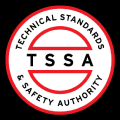 TSSA (Technical Standards and Safety Authority)
TSSA (Technical Standards and Safety Authority)
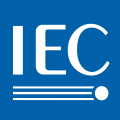 International Electrotechnical Commission (IEC)
International Electrotechnical Commission (IEC)
 International Organization for Standardization
International Organization for Standardization
GAO’s Software Provides API
GAO’s popular RFID software such as personnel tracking, asset tracking, access control, parking system control offers a free trial and offers an API to each of the common software in the electrical equipment manufacturing industry.
Personnel Management:
- Streamlines Recruitment Process: Implementing personnel management software can help automate and simplify the recruitment process, from posting job openings to scheduling interviews and sending offer letters. This saves time and increases efficiency in the selection process.
- Improves Communication: Having a centralized platform for communication between employees, managers, and HR can prevent misunderstandings and improve overall communication within the company.
- Supports Development and Training: Can help track employee training and development, from onboarding to ongoing education. This ensures that employees have the skills and knowledge necessary to perform their jobs effectively.
- Enables Effective Performance Management: Personnel management software can help track employee performance and provide regular feedback, enabling managers to identify areas for improvement and recognize top performers. This can increase employee engagement and job satisfaction.
Equipment management:
- Improved Asset Tracking: By tracking the location and status of equipment, including maintenance schedules and repair history, equipment management software helps ensure that equipment operates optimally, minimizing downtime and maximizing productivity.
- Preventive Maintenance: Automates preventive maintenance schedules, reducing the risk of equipment failure and extending equipment lifespan. This saves money on repairs and replacements in the long term.
- Inventory Management: Tracks inventory levels of spare parts and equipment, ensuring that necessary parts are always in stock and minimizing equipment downtime. This helps reduce equipment repair and maintenance costs.
- Data Analytics and Reporting: Provides insights into equipment usage, maintenance costs, and performance, enabling managers to make data-driven decisions and optimize equipment management strategies. This helps increase efficiency, reduce costs, and improve overall equipment management in the long term.
Supply chain management:
- Enhanced Supplier Management: By helping manage supplier relationships, track supplier performance, and monitor compliance with quality standards, supply chain management software can help businesses reduce supply chain risk and ensure that high-quality materials are available when needed.
- Logistics Optimization: Supply chain management software can optimize logistics operations, from transportation planning to warehouse management, reducing transportation costs and improving delivery times. This helps businesses improve their bottom line by reducing costs and improving customer satisfaction.
- Real-time Visibility: With real-time visibility into the status of orders, shipments, and inventory levels, supply chain management software can help businesses respond quickly to changes in demand or supply chain disruptions, ensuring timely delivery of products. This helps businesses meet customer expectations and maintain a competitive edge in the market.
Other applications:
- Improved Design and Development: Computer-Aided Design (CAD) software helps engineers create and modify 2D and 3D models of electrical equipment, reducing design errors and speeding up the development process. This helps businesses bring high-quality products to market faster and more efficiently.
- Enhanced Maintenance and Quality Control: Computerized Maintenance Management System (CMMS) and Quality Management System (QMS) software help businesses schedule and track maintenance activities and implement quality control measures, respectively. By reducing downtime, prolonging equipment lifespan, and ensuring product compliance with customer requirements and regulatory standards, these software solutions help businesses improve product quality and reduce costs in the long term.
- Streamlined Business Operations: Enterprise Resource Planning (ERP) software integrates various business processes into a single platform, facilitating communication and coordination between different departments. This helps businesses improve efficiency, reduce errors, and gain a holistic view of their operations, leading to improved decision-making and cost savings.
Case Studies of RFID Applications
A case study of RFID application in the electrical equipment manufacturing industry in the U.S.:
Siemens Energy Management implemented RFID technology to track the progress of production and improve supply chain efficiency. RFID tags were placed on production units to monitor the flow of materials through the production process, allowing the company to track progress and identify bottlenecks. The RFID system enabled real-time tracking of materials, which helped improve inventory management and reduce manual tracking. The system also reduced errors and improved inventory record accuracy. Additionally, the RFID data helped the company comply with regulatory requirements by generating reports documenting material origin and movement. Overall, the implementation of RFID technology helped Siemens Energy Management improve efficiency, reduce costs, and comply with regulations, highlighting the potential benefits of RFID technology for the electrical equipment manufacturing subindustry in the U.S.
Another case study of RFID application in the equipment manufacturing industry in the U.S.:
General Electric (GE) implemented RFID technology in its transformer manufacturing plant to improve efficiency and visibility in its supply chain. RFID tags were used to track transformers as they moved through the manufacturing plant, allowing the company to monitor their location in real-time. This helped to track their progress at each stage of production, from manufacturing to final delivery to the customer. The technology not only improved supply chain visibility and efficiency, but also helped to reduce costs and improve product quality by quickly identifying and resolving production or quality issues. The RFID system also facilitated auditing and reporting, helping GE comply with industry regulations. Overall, GE’s case study demonstrates how RFID technology can enhance efficiency, visibility, and quality in the manufacturing of electrical equipment, highlighting the importance of adopting new technologies to remain competitive in the industry.
GAO Has Served the Electrical Equipment Manufacturing industry extensively.
GAO RFID Inc., one of the global top 10 RFID leaders, is based in the cities of New York and Toronto and it has deployed RFID, BLE and IoT projects for many leading companies in the electrical equipment manufacturing subindustry, including its various divisions such as:
- Electric power generation: This sub-industry focuses on the production of equipment and technologies for electric power generation, such as turbines, generators, solar panels, and energy storage systems.
- Electric power distribution: This sub-industry focuses on the production of equipment and technologies for electric power distribution, such as transformers, switches, control panels, and energy meters.
- Industrial automation: This sub-industry focuses on the production of equipment and systems for industrial process automation, such as robots, process control systems, sensors, and automation software.
- Lighting systems: This sub-industry focuses on the production of equipment and technologies for lighting, such as lamps, luminaires, and smart lighting systems.
- Electrical protection equipment: This sub-industry focuses on the production of equipment and technologies for the protection of electrical systems, such as surge protection systems, fuses, switches, and disconnect devices.
- Renewable energies: This sub-industry focuses on the production of equipment and technologies for the generation of energy from renewable sources, such as wind turbines, solar panels, geothermal energy systems, and renewable energy storage systems.
- Test and measurement equipment: This sub-industry focuses on the production of equipment and technologies for the testing and measurement of electrical systems, such as multimeters, oscilloscopes, electric network analyzers, and diagnostic systems.
List of the leading companies in the electrical equipment manufacturing in the U.S.
 General Electric (GE)
General Electric (GE)
 Siemens-Reiniger-Werke
Siemens-Reiniger-Werke
 ABB Limited
ABB Limited
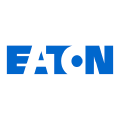 Eaton Corporation
Eaton Corporation
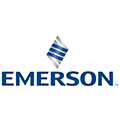 Emerson Electric Company
Emerson Electric Company
 Honeywell International
Honeywell International
 Schneider Electric
Schneider Electric
 Rockwell Automation Incorporated
Rockwell Automation Incorporated
 Belden Incorporated
Belden Incorporated
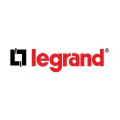 Legrand Incorporated
Legrand Incorporated
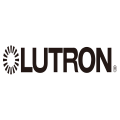 Lutron Electronics Company Incorporated
Lutron Electronics Company Incorporated
 Hubbell Incorporated
Hubbell Incorporated
 Acuity Brands Incorporated
Acuity Brands Incorporated
 Cree Incorporated
Cree Incorporated
 Amphenol Corporation
Amphenol Corporation
 Nidec Corporation
Nidec Corporation
 FLIR Systems Incorporated
FLIR Systems Incorporated
 Johnson Controls International
Johnson Controls International
List of the leading companies in the electrical equipment manufacturing in Canada.
 Phoenix Contact Canada
Phoenix Contact Canada
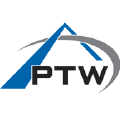 PTW Energy Services Limited
PTW Energy Services Limited
 Rexel Canada Electrical Incorporated
Rexel Canada Electrical Incorporated
 Vention incorporated
Vention incorporated
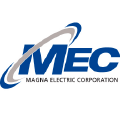 Magna Electric Corporation
Magna Electric Corporation
 E.B. Horsman & Son
E.B. Horsman & Son
